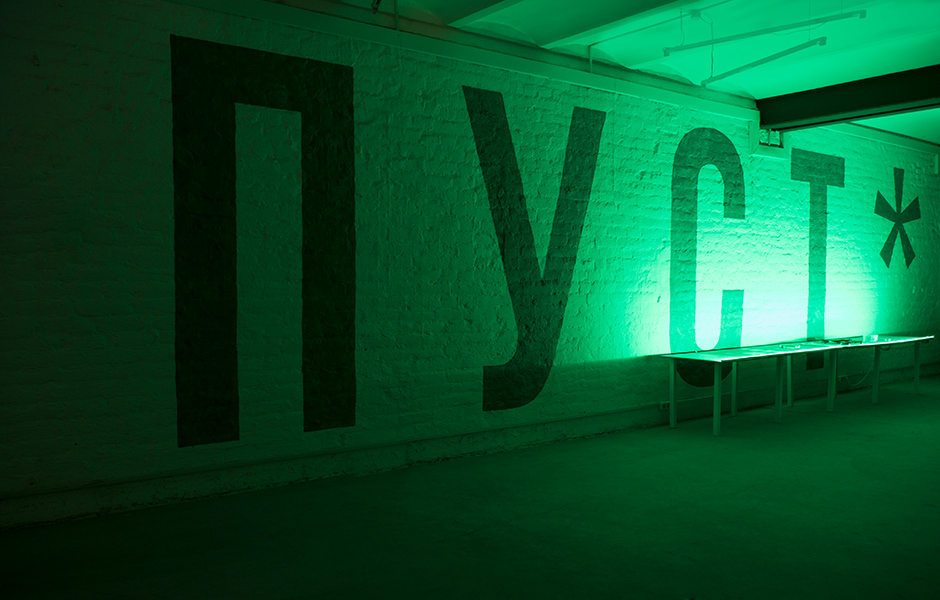ПУСТ* cycle:
ID: C7

Date:
2016 — 2017
Introduction:
ПУСТ* (PUST) is an interdisciplinary project exploring the processes of mythologization of a specific historical event – the Belavezha Accords of 1991. The project includes а light installation, dance, sound, multi-channel video, along with found and specially created objects.
Core team:
The artists’ collective ПУСТ* consists of four representatives from different artistic genres: the composer Yuri Akbalkan, the video and media artist Snezhana Vinogradova, the choreographer Alexandra Portyannikova and the visual artist Sergey Shabohin.
Support:
Goethe-Institut St. Petersburg
Within Interdisciplinary Laboratory —
a large-scale project of the Goethe-Institut
Eastern Europe and Central Asia
Within Interdisciplinary Laboratory —
a large-scale project of the Goethe-Institut
Eastern Europe and Central Asia
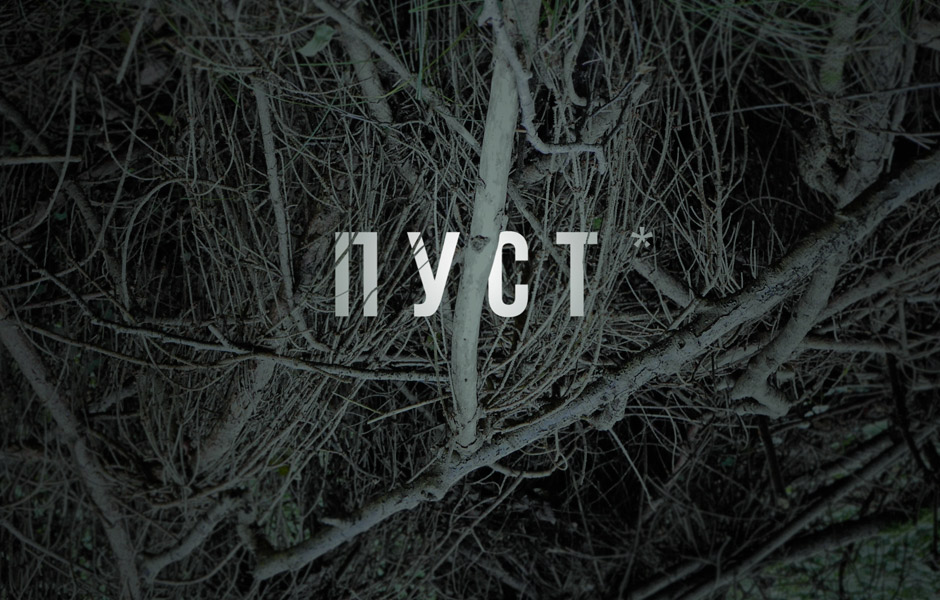
The title ПУСТ* refers to events that took place on December 7–8, 1991, during which time the presidents of Russia, Ukraine and Belarus signed the Belavezha Accords, officially dissolving the Soviet Union. This event took place in a hunting cabin in the woods of the Belavezha Forest (Belarus) under the veil of secrecy and still mythologized to this day. Various sources report a variety of controversial events. Some assert that the premises where the treaty was signed had been surrounded by secret services that did not intervene in what was taking place. Other sources state that the treaties were signed in a drunken state. There is a prevalent rumor that that, once signed, the documents temporarily disappeared and were then found in the trash bin the following day. Others conjecture that the signatories feared being accused of treason and had made preparations to flee across the border to Poland by walking through the forest.

Belavezha Accords,
1991
1991
The artists behind the ПУСТ* project are representatives of a generation that was caught up in the collapse of the USSR and felt the consequences of this breakup over two eras, but did not directly participate in the related events due to their young age at the time. The ПУСТ* Project is an attempt to fill in gaps in one’s own «mental map» and make this event a part of a restored historical memory.
Incorporating multiple artistic methods and approaches, the collective attempts to imagine the events in the Belavezha Forest from the perspective of its participants, drawing parallels between fear of the «wild forest» and fear of wild politics, between being completely adrift but also spontaneously decisive, between the enormous impact of this enormous political decision and a series of unpredictable and absurd factors that influenced it behind the scenes.
Incorporating multiple artistic methods and approaches, the collective attempts to imagine the events in the Belavezha Forest from the perspective of its participants, drawing parallels between fear of the «wild forest» and fear of wild politics, between being completely adrift but also spontaneously decisive, between the enormous impact of this enormous political decision and a series of unpredictable and absurd factors that influenced it behind the scenes.
The title ПУСТ* has several connotations: On the one hand, it signifies a «wild, uninhabited, dense, pathless forest» (Belavezha Forest) that would otherwise be primarily defined by emptiness and desolation. At the same time, the word means «let it be,» which signifies a kind of acceptance of having to inhabit the political wilderness. This is a criticism of society and ourselves.
ПУСТ* is the resulting project of the Interdisciplinary Laboratory – a large-scale project of Goethe-Institut Eastern Europe and Central Asia. In 2016, the collective worked as guest artists in Karlsruhe and, as an outcome of the residency, presented the first outline of ПУСТ* in ZKM. In 2017, the collective visited the site of the historical event, the Belavezha Forest, and collected audio and video material for the exhibit. The final presentation took place on November 23 – 26, 2017 in St. Petersburg.
Viewing the Belavezha event as an act of creating political myths with a kind of fairy tale behind it, various symbolic objects were found: brushwood, fern, anthill, wild animals and other images filled with paganism, ceremonial alcohol as an invariable attribute of fantasy and conjecture, Soviet crystal, a long negotiation table, the document itself and the bizarre story of its creation and disappearance. The team created an eight-channel synthesizer that uses phase-shifted analog sine-waves to generate constantly changing ambient-noise landscapes in real-time. Schwarzwald light installationacted as stand alone object during the exhibition, providing scenography for the performance and allowing visitors to enter the conditional forest. The video was produced in the woods of the Belavezha Forest (Belarus) and in Schwarzwald (Germany) and built into the exhibition as a multi-channel installation. The choreography consisted of various bodily patterns: movements of ordinary Soviet citizens (the social body), images of forest phantoms and natural / political savagery, the plasticity of politicians including the facial expressions of Belarusian President Stanislav Shushkevich and a dance of Boris Yeltsin.
Viewing the Belavezha event as an act of creating political myths with a kind of fairy tale behind it, various symbolic objects were found: brushwood, fern, anthill, wild animals and other images filled with paganism, ceremonial alcohol as an invariable attribute of fantasy and conjecture, Soviet crystal, a long negotiation table, the document itself and the bizarre story of its creation and disappearance. The team created an eight-channel synthesizer that uses phase-shifted analog sine-waves to generate constantly changing ambient-noise landscapes in real-time. Schwarzwald light installationacted as stand alone object during the exhibition, providing scenography for the performance and allowing visitors to enter the conditional forest. The video was produced in the woods of the Belavezha Forest (Belarus) and in Schwarzwald (Germany) and built into the exhibition as a multi-channel installation. The choreography consisted of various bodily patterns: movements of ordinary Soviet citizens (the social body), images of forest phantoms and natural / political savagery, the plasticity of politicians including the facial expressions of Belarusian President Stanislav Shushkevich and a dance of Boris Yeltsin.
* ПУСТ (PUST) – the title of the project refers to the Old-Slavic etymology of the word пуща (Puschtscha), which means a “primeval forest”. The word was formed from the short form of the adjective пуст (empty). Several words from the same root can be found in Slavic languages: пустота (emptiness), пустыня (desert), пусть (let it be).
Works and events within the cycle:
November 23, 2017 / 20:00:
Final presentation
in Saint Petersburg
E17.2
︎ technical info
Berthold Centre, Saint Petersburg, Russia
Original idea, design, objects: Sergey Shabohin
Choreography:
Concept, performance: Isadorino Gore Dance co-op (Daria Plokhova, Alexandra Portyannikova)
Costumes: VOLNA
Light installation:
Concept, production: VOLNA (Nikita Golyshev, Snezhana Vinogradova)
Electronic assembly support: Nikita Savinyh
Assembly: VOLNA (Dmitry Gavkalyuk, Katerina Morza)
Sound:
Composer: Yuri Akbalkan
Development and programming of digital synthesizer: Sergey Kostyrko
Video installation:
Concept, editing, production: VOLNA
Camera: Alexey Kubasov, Sergey Shabohin
Project documentation:
Camera: Polina Korotaeva, VOLNA
Photo: Valery Smirnov
Goethe-Institut St. Petersburg:
Director: Dr. Günther Hasenkamp
Initiator of the project, Director of Goethe-Institut St. Petersburg, 2014 – 2017: Dr. Angelika Eder
Project coordinators: Jana Soboleva, Snezhana Vinogradova
Berthold Centre, Saint Petersburg, Russia
Original idea, design, objects: Sergey Shabohin
Choreography:
Concept, performance: Isadorino Gore Dance co-op (Daria Plokhova, Alexandra Portyannikova)
Costumes: VOLNA
Light installation:
Concept, production: VOLNA (Nikita Golyshev, Snezhana Vinogradova)
Electronic assembly support: Nikita Savinyh
Assembly: VOLNA (Dmitry Gavkalyuk, Katerina Morza)
Sound:
Composer: Yuri Akbalkan
Development and programming of digital synthesizer: Sergey Kostyrko
Video installation:
Concept, editing, production: VOLNA
Camera: Alexey Kubasov, Sergey Shabohin
Project documentation:
Camera: Polina Korotaeva, VOLNA
Photo: Valery Smirnov
Goethe-Institut St. Petersburg:
Director: Dr. Günther Hasenkamp
Initiator of the project, Director of Goethe-Institut St. Petersburg, 2014 – 2017: Dr. Angelika Eder
Project coordinators: Jana Soboleva, Snezhana Vinogradova
ПУСТ* is the resulting project of the Interdisciplinary Laboratory – a large-scale project of Goethe-Institut Eastern Europe and Central Asia. In 2016, the collective worked as guest artists in Karlsruhe and, as an outcome of the residency, presented the first outline of ПУСТ* in ZKM. In 2017, the collective visited the site of the historical event, the Belavezha Forest, and collected audio and video material for the exhibit. The final presentation took place on November 23 – 26, 2017 in St. Petersburg.
Viewing the Belavezha event as an act of creating political myths with a kind of fairy tale behind it, various symbolic objects were found: brushwood, fern, anthill, wild animals and other images filled with paganism, ceremonial alcohol as an invariable attribute of fantasy and conjecture, Soviet crystal, a long negotiation table, the document itself and the bizarre story of its creation and disappearance. The team created an eight-channel synthesizer that uses phase-shifted analog sine-waves to generate constantly changing ambient-noise landscapes in real-time. Schwarzwald light installationacted as stand alone object during the exhibition, providing scenography for the performance and allowing visitors to enter the conditional forest. The video was produced in the woods of the Belavezha Forest (Belarus) and in Schwarzwald (Germany) and built into the exhibition as a multi-channel installation. The choreography consisted of various bodily patterns: movements of ordinary Soviet citizens (the social body), images of forest phantoms and natural / political savagery, the plasticity of politicians including the facial expressions of Belarusian President Stanislav Shushkevich and a dance of Boris Yeltsin.
Viewing the Belavezha event as an act of creating political myths with a kind of fairy tale behind it, various symbolic objects were found: brushwood, fern, anthill, wild animals and other images filled with paganism, ceremonial alcohol as an invariable attribute of fantasy and conjecture, Soviet crystal, a long negotiation table, the document itself and the bizarre story of its creation and disappearance. The team created an eight-channel synthesizer that uses phase-shifted analog sine-waves to generate constantly changing ambient-noise landscapes in real-time. Schwarzwald light installationacted as stand alone object during the exhibition, providing scenography for the performance and allowing visitors to enter the conditional forest. The video was produced in the woods of the Belavezha Forest (Belarus) and in Schwarzwald (Germany) and built into the exhibition as a multi-channel installation. The choreography consisted of various bodily patterns: movements of ordinary Soviet citizens (the social body), images of forest phantoms and natural / political savagery, the plasticity of politicians including the facial expressions of Belarusian President Stanislav Shushkevich and a dance of Boris Yeltsin.

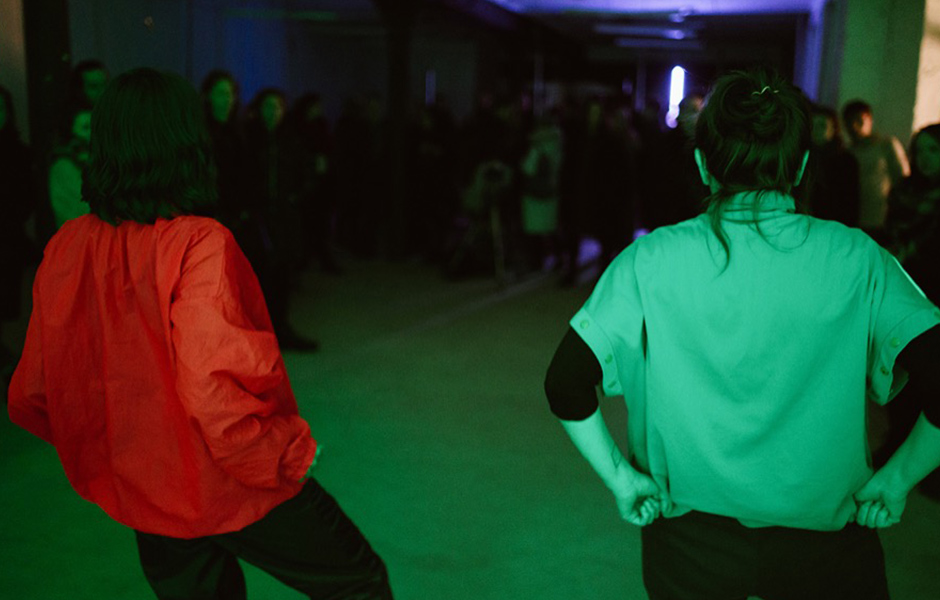
1. ПУСТ*, poster,
Berthold Centre,
Saint Petersburg, Russia
2017
2. Fragment of performance,
Berthold Centre,
Saint Petersburg, Russia
2017
Berthold Centre,
Saint Petersburg, Russia
2017
2. Fragment of performance,
Berthold Centre,
Saint Petersburg, Russia
2017
Video documentation:
Info installation:

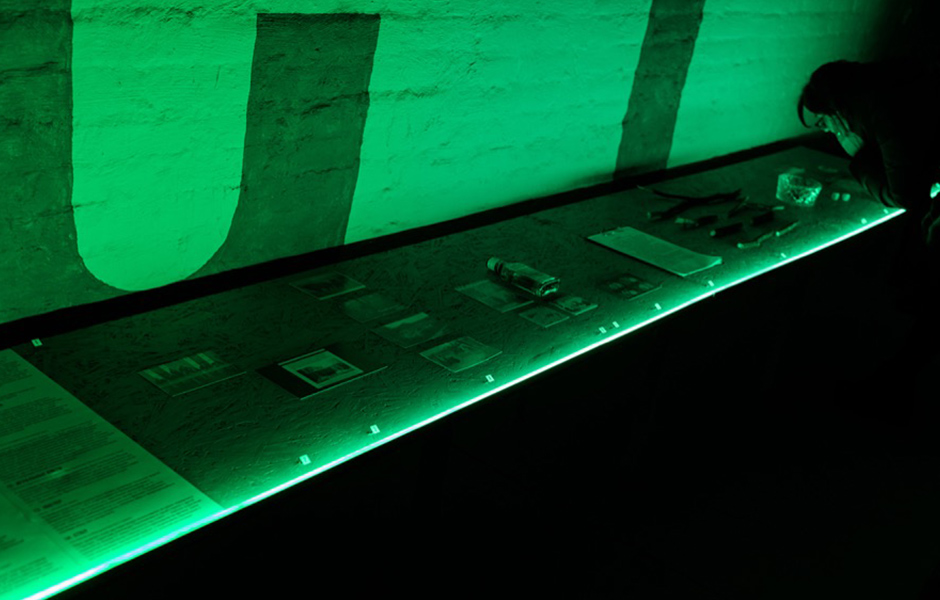
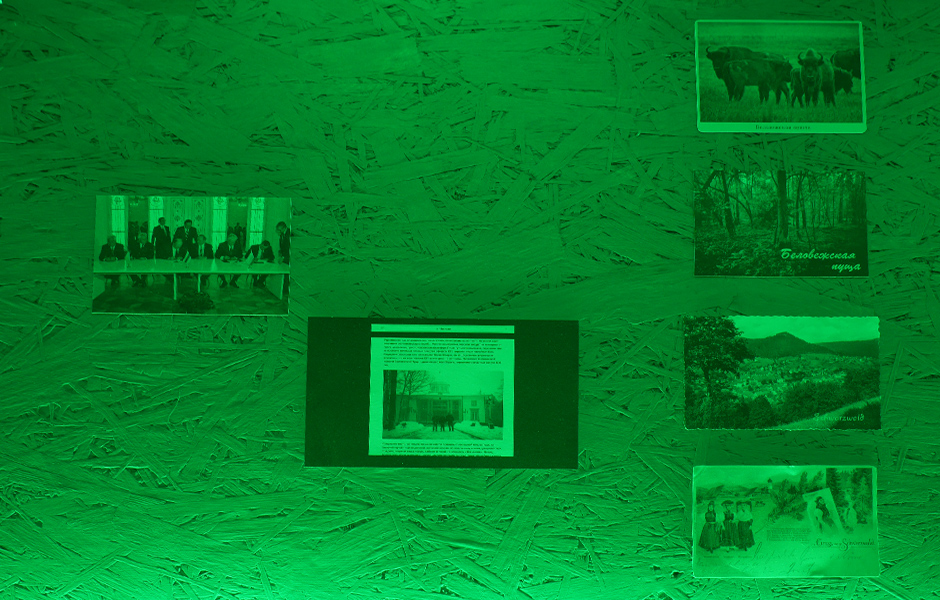
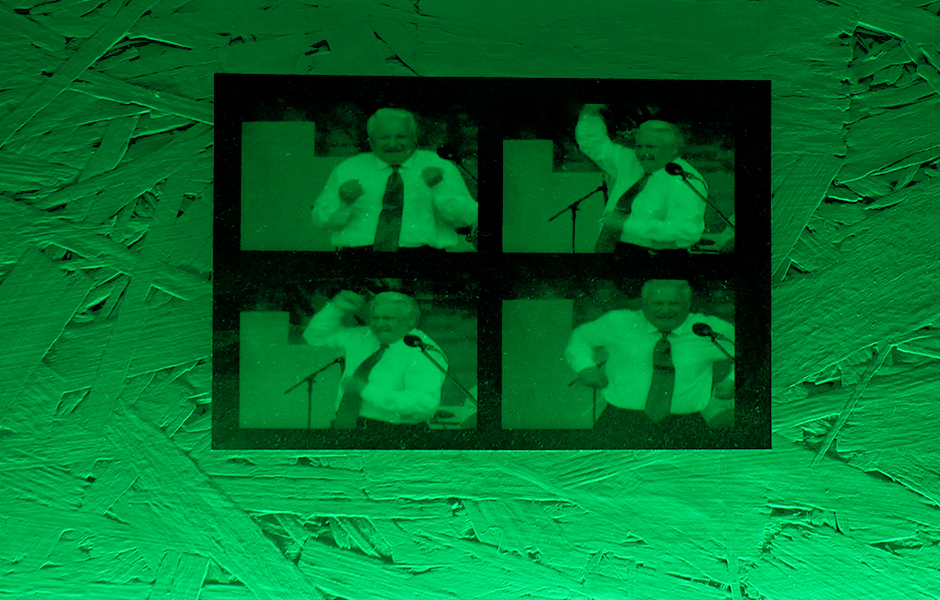


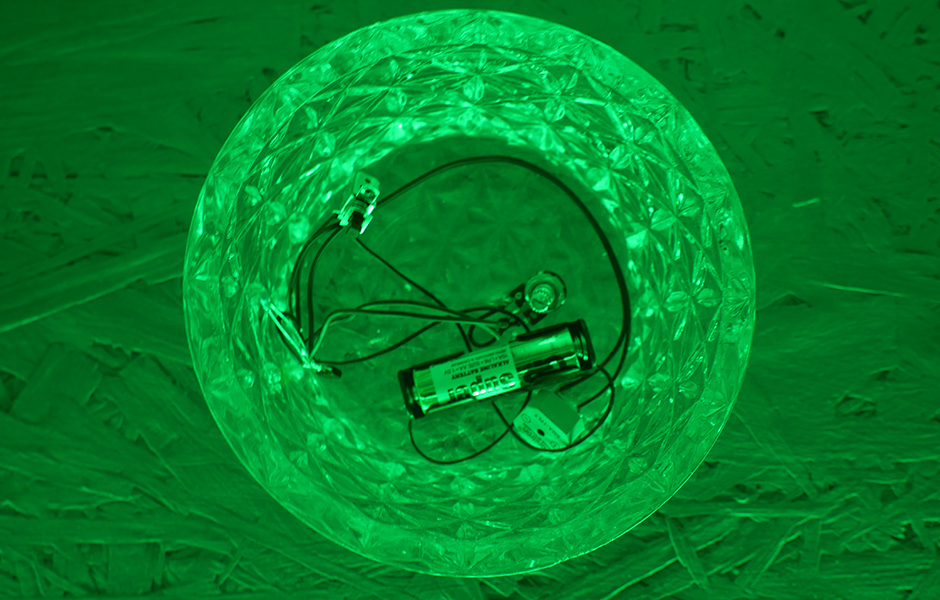

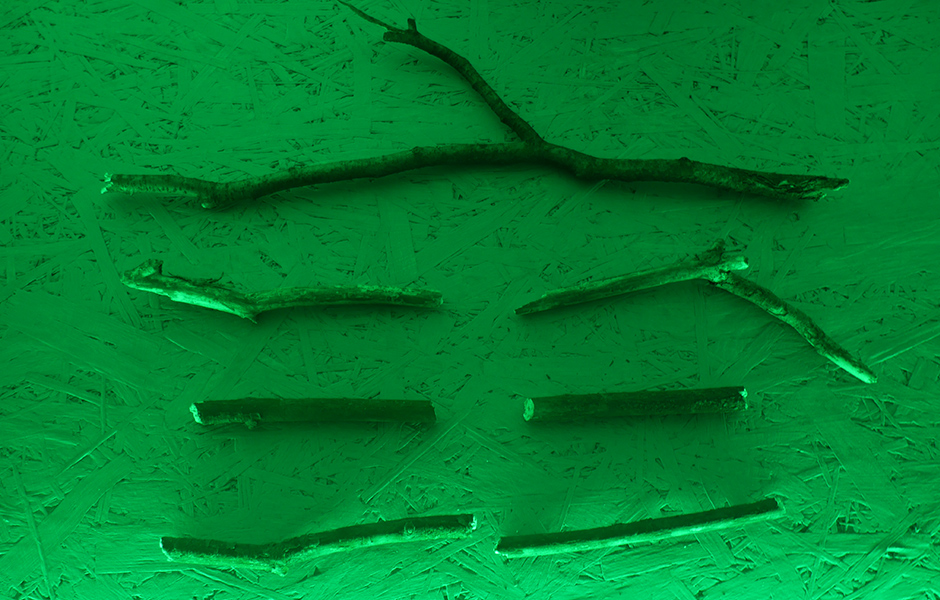
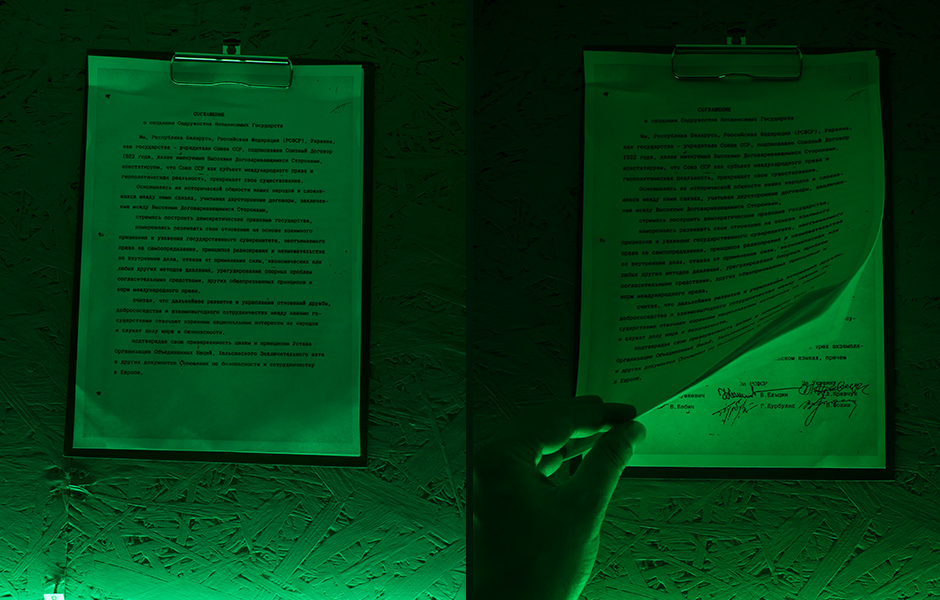
Light installation:
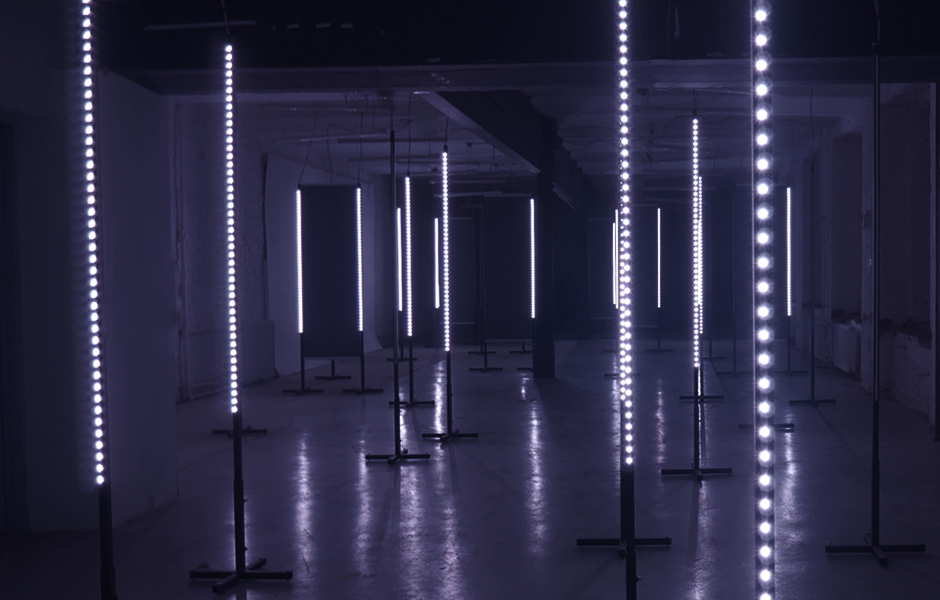
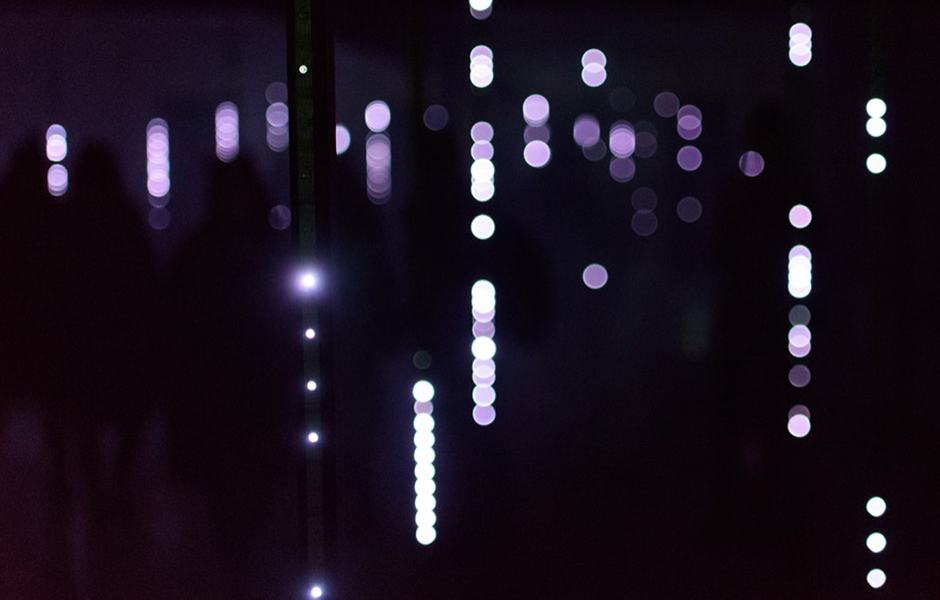

Video installation:


Sound:

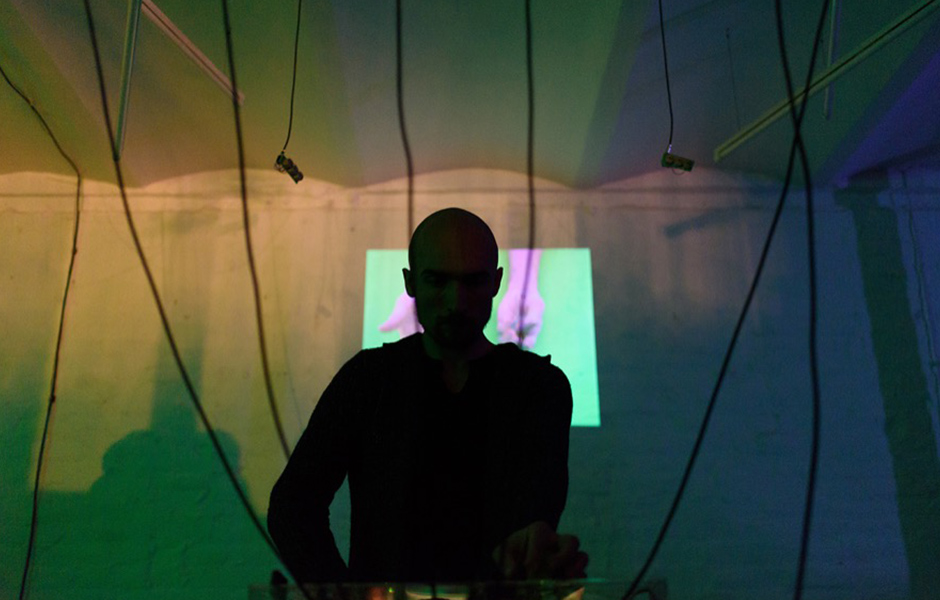

Choreography:
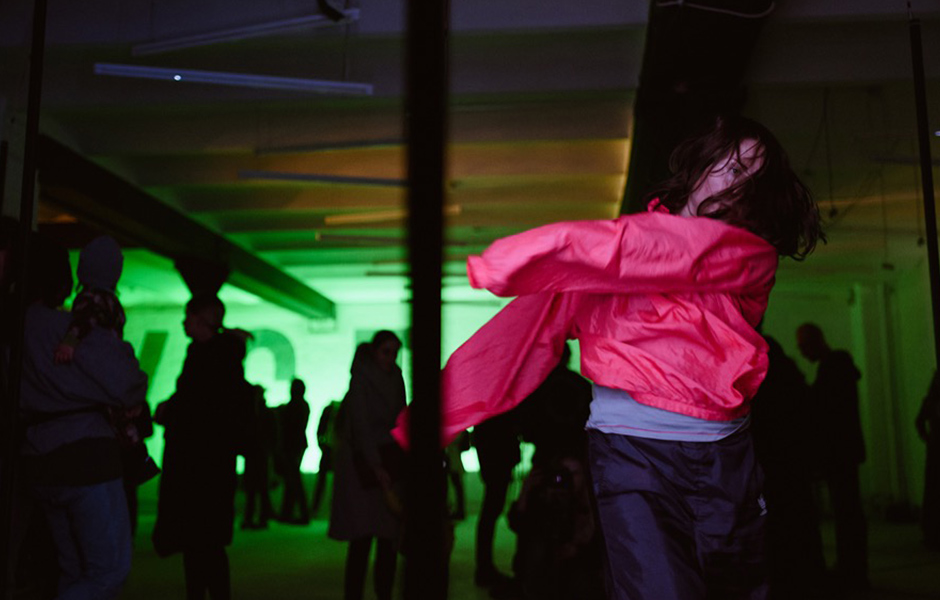
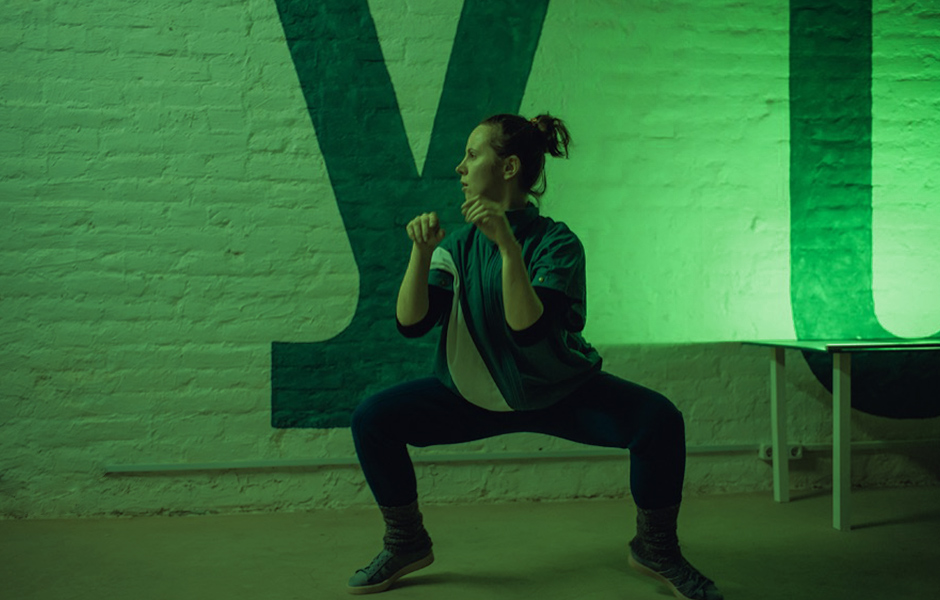
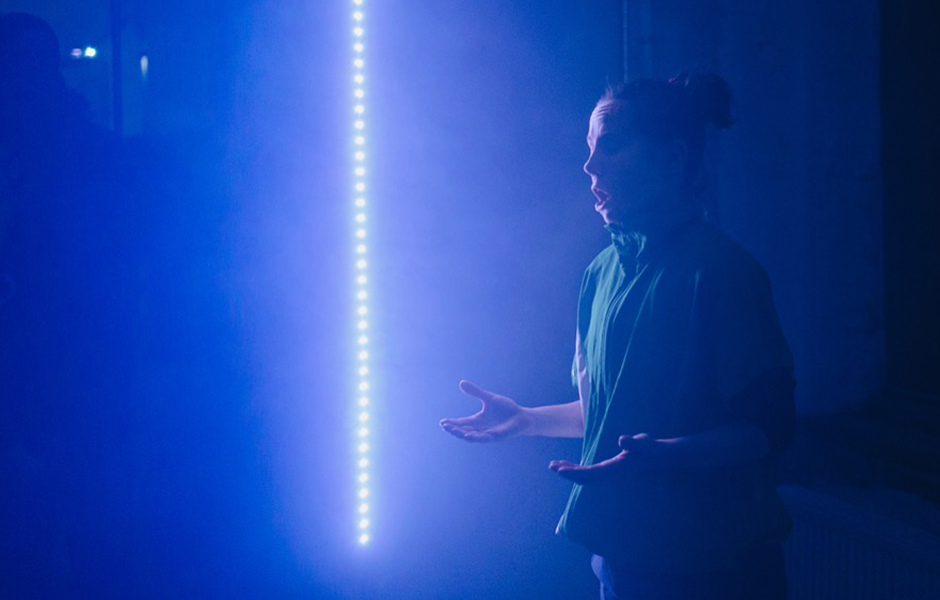
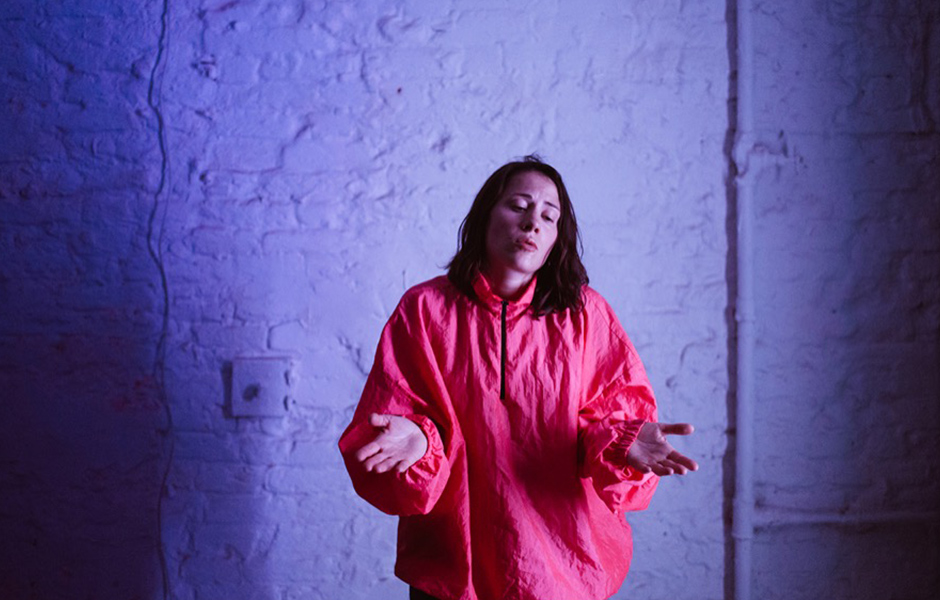
July 5 – 18, 2017:
Residence in Minsk
and Belavezha Forest
A17.1
︎ technical info
Research plein air
Minsk and Belavezha Forest, Belarus
Research plein air
Minsk and Belavezha Forest, Belarus
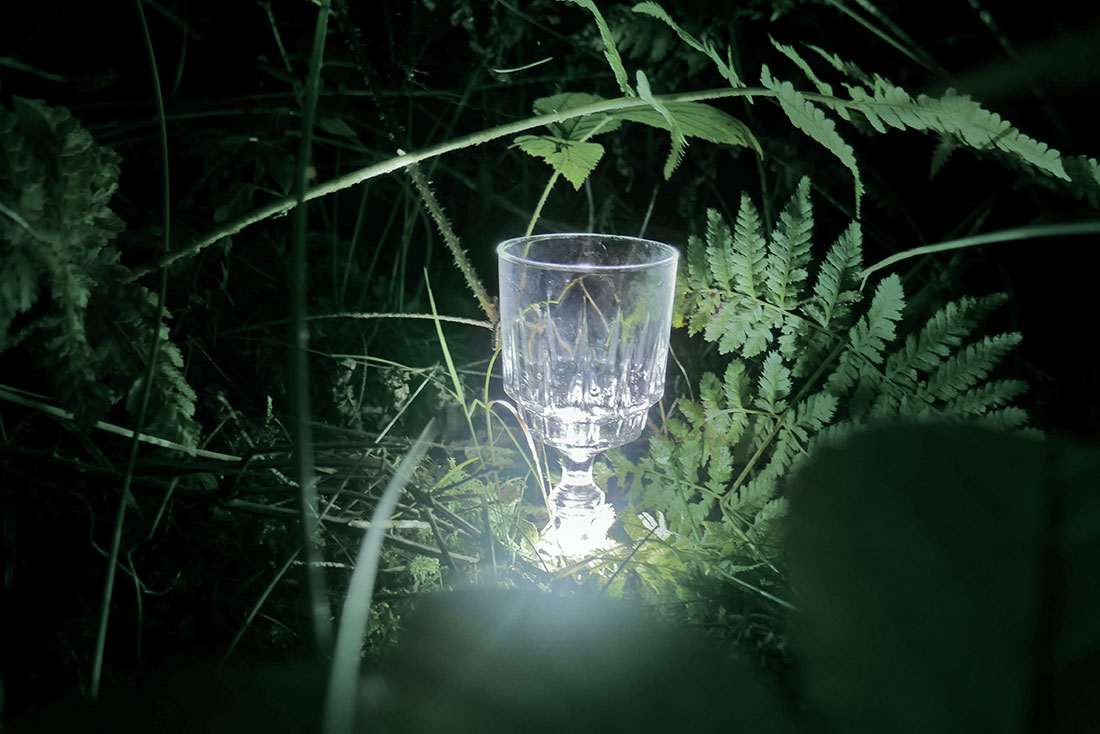
Work material
October 9, 2016 / 20:00:
First presentation
in KUBUS (ZKM)
E16.2
︎ technical info
KUBUS, ZKM (Zentrum für Kunst und Medien), Karlsruhe, Germany
Team ZKM: Luise Wiesenmüller (production manager), Hans Gass (lighting, event engineering), Sebastian Schottke (sound engineer), Matthias Müller (sound engineer), Bernhard Sturm (operating technology), David Luchow (assistant operating technology), Götz Dipper (music informatics), Yannick Hofmann and Caro Mössner (secretary), Christina Zartmann and Anna Titova (video documentation), Anton Kossjanenko (recording
KUBUS, ZKM (Zentrum für Kunst und Medien), Karlsruhe, Germany
Team ZKM: Luise Wiesenmüller (production manager), Hans Gass (lighting, event engineering), Sebastian Schottke (sound engineer), Matthias Müller (sound engineer), Bernhard Sturm (operating technology), David Luchow (assistant operating technology), Götz Dipper (music informatics), Yannick Hofmann and Caro Mössner (secretary), Christina Zartmann and Anna Titova (video documentation), Anton Kossjanenko (recording
The result of the work in the residence.
The interdisciplinary project consists of movement, sound, video and objects. The artists employ a variety of objects and artistic methods — a ring-like arrangement of analogous sinuses, the crackling sounds of joints and branches, the frenzied sounds dice being thrown, physiological allegories, views of the forest, Soviet crystal decorations and other found objects create a space that help the viewer to experience the power of this historical event.
The interdisciplinary project consists of movement, sound, video and objects. The artists employ a variety of objects and artistic methods — a ring-like arrangement of analogous sinuses, the crackling sounds of joints and branches, the frenzied sounds dice being thrown, physiological allegories, views of the forest, Soviet crystal decorations and other found objects create a space that help the viewer to experience the power of this historical event.
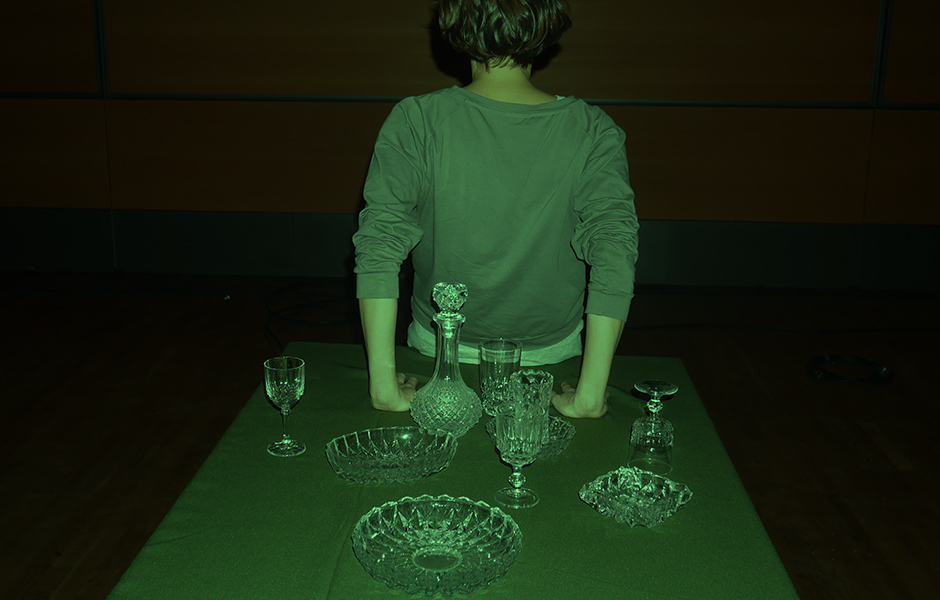

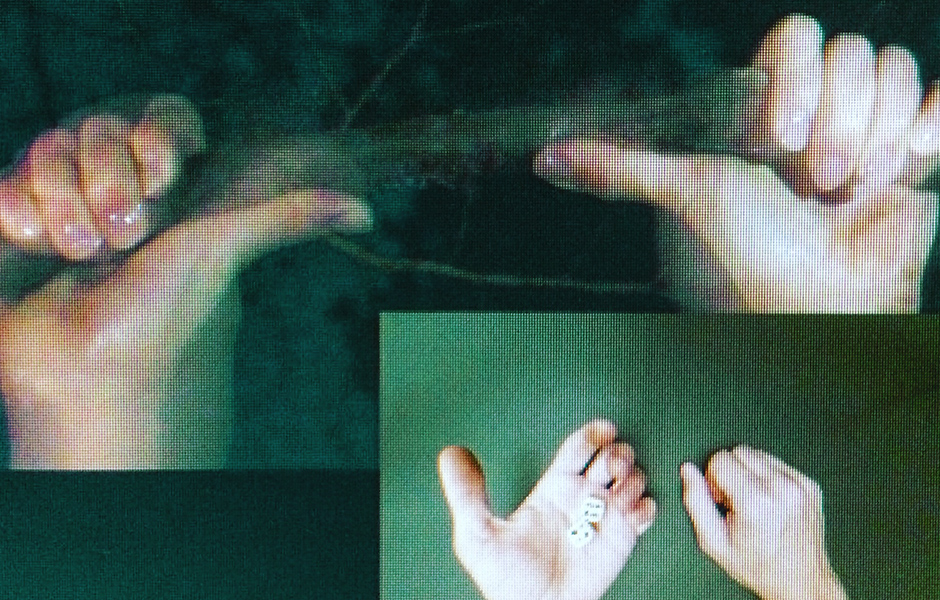
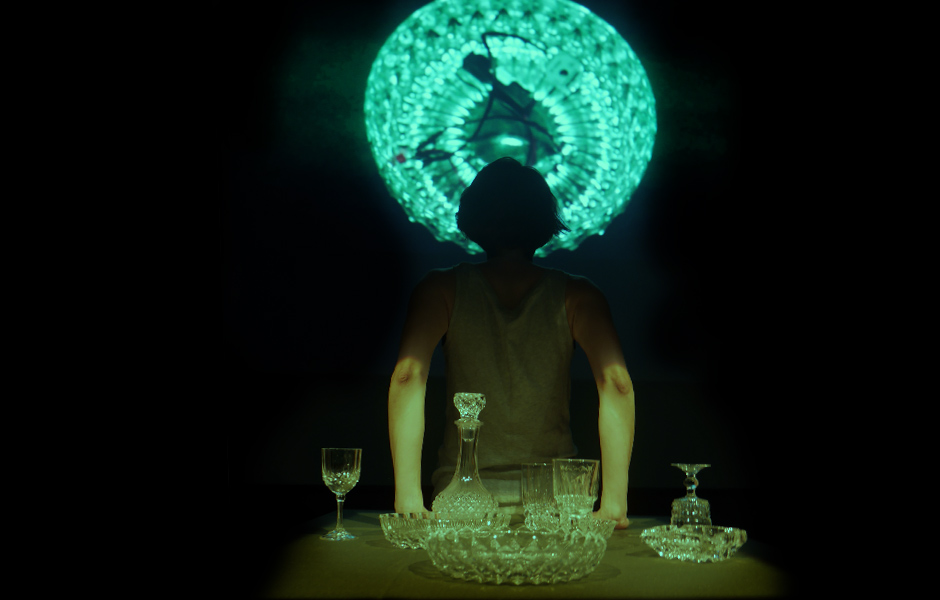
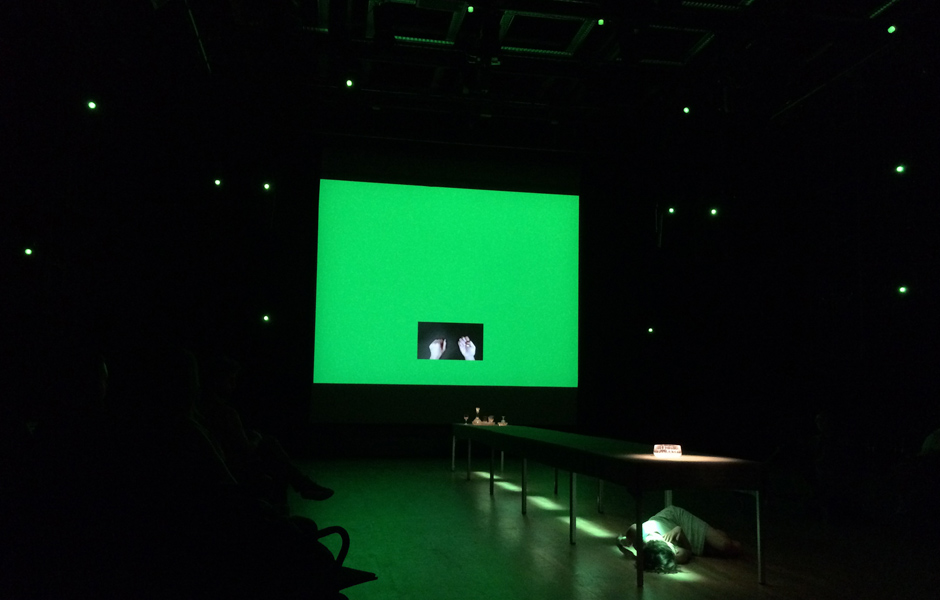
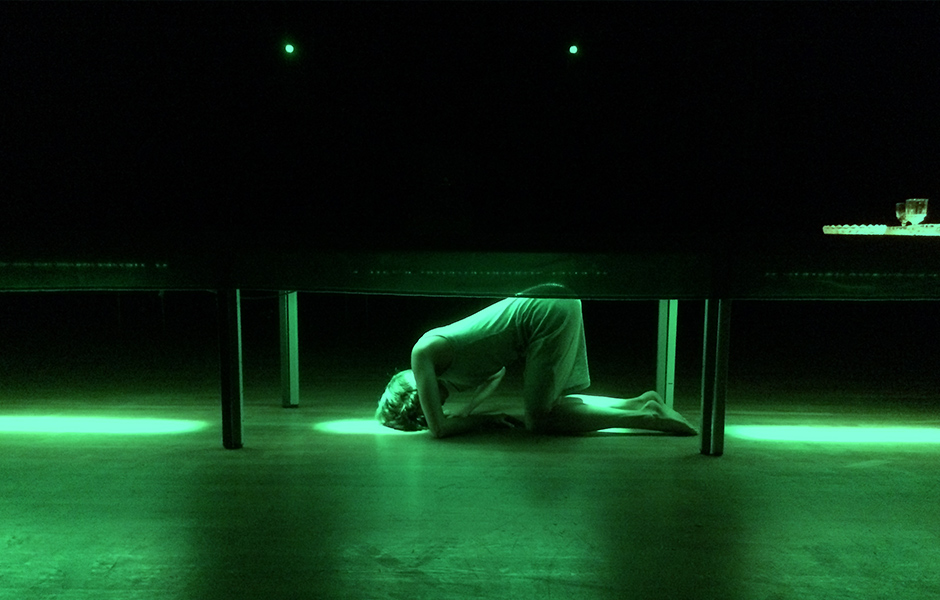
ПУСТ*,
fragments of performance,
Kubus, ZKM,
Karlsruhe, Germany,
2016
fragments of performance,
Kubus, ZKM,
Karlsruhe, Germany,
2016
September 12 — October 9, 2016:
Residence in ZKM
A16.2
Creative residence in a group. The result of the work in the residence was shown in as a performance-sketch.
Over four weeks, the collective ПУСТ* worked as guest artists in Karlsruhe and presents the first outline of the project in ZKM as an outcome of this residency.
Over four weeks, the collective ПУСТ* worked as guest artists in Karlsruhe and presents the first outline of the project in ZKM as an outcome of this residency.

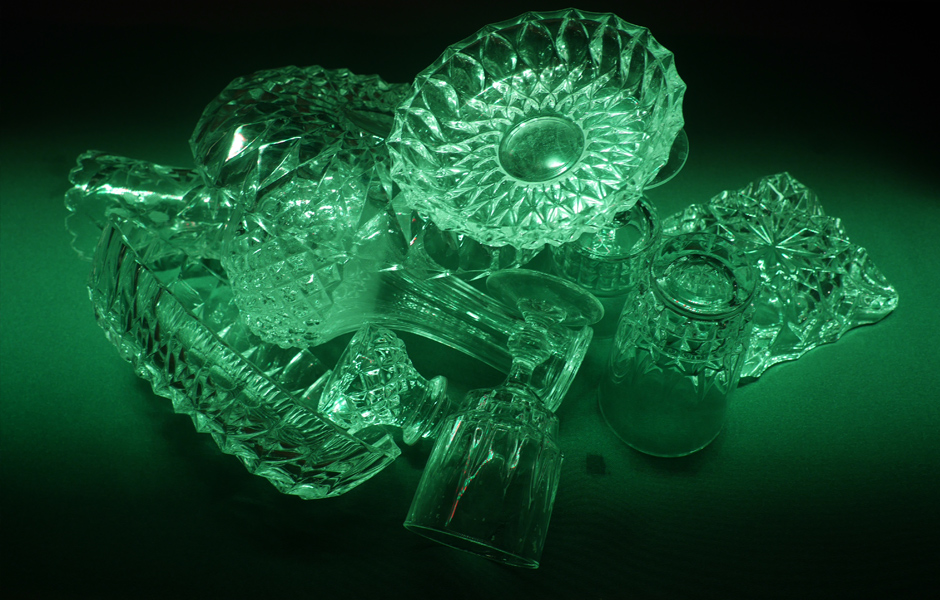
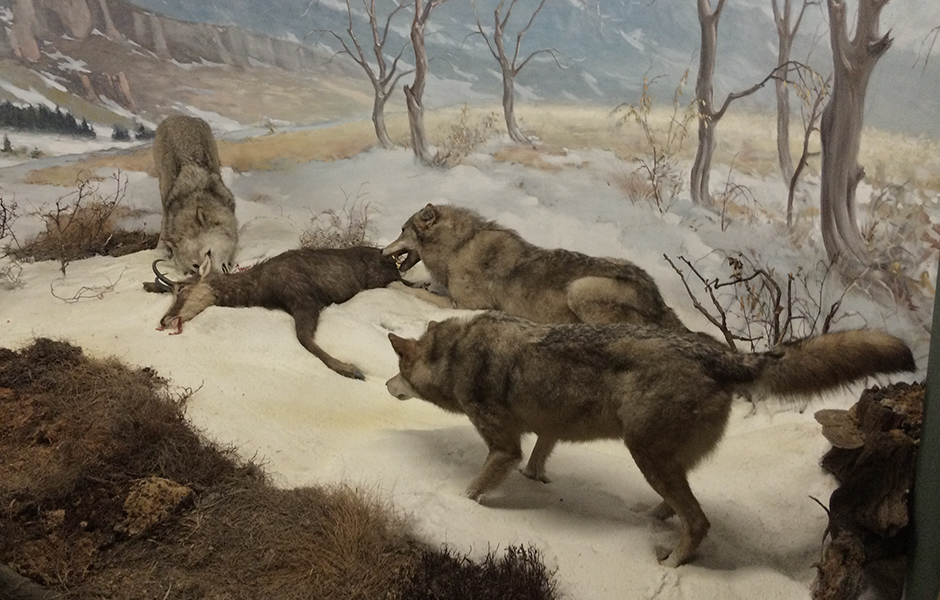
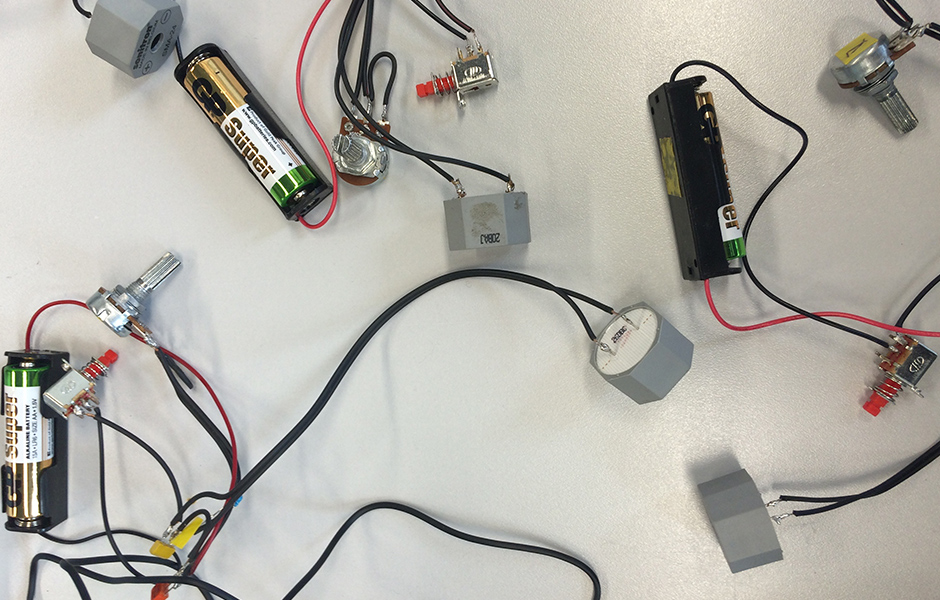
Working materials
